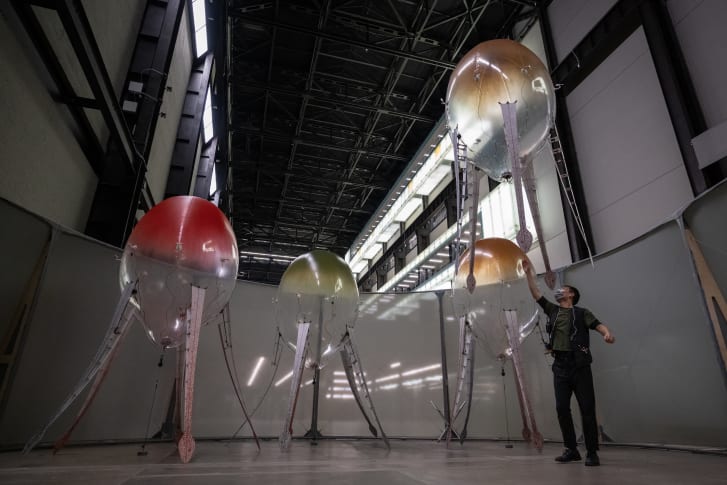Inspired by ocean life forms and mushrooms, the helium-filled shapes move around using rotors and a small battery pack. Together, they create an "ecosystem" within the museum, Yi said in a press statement, interacting with their environment and visitors, and displaying individual and group behaviors.
Behind the scenes, an incredible amount of AI technology and research is powering this floating family. A team of specialists has developed the aerial vehicles using software that gives each a unique flight path. The software, called an artificial life program, generates a huge range of journey options for the orbs to take and therefore simulates the somewhat unpredictable processes of natural life. This kind of technology is normally used in scientific studies but has also been employed to create lifelike visual effects and animations.
The robots will respond to the space and people around them by receiving information from electronic sensors positioned around the venue. The signals affect them individually and as a group so that they will behave differently upon each encounter.
"Like a bee's dance or an ant's scent trail, the aerobes communicate with each other in ways we cannot understand," a Tate Modern statement described.









